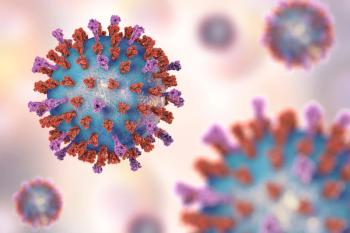
Statins in Rheumatoid Arthritis: Evidence of a Targeted Benefit?
Lower inflammation scores found in patients with RA receiving statins.
Lower inflammation scores found in patients with RA receiving statins.
In a metaanalysis by Xing and colleagues published in the journal Medicine in February 2015, investigators evaluated the body of literature supporting use of statins in reducing the inflammatory symptoms associated with rheumatoid arthritis (RA).
Although data is mixed, and the efficacy of statins in reducing inflammation is controversial, the anti-inflammatory pleiotropic effects of statins is well-documented in scientific literature. Researchers evaluated the efficacy of statins in reducing symptom of RA using several criteria reported in trials including criteria such as the DAS28 and HAQ scoring systems, and blood test measures such as ESR and CRP.
Researchers identified a total of 13 studies comprising data from 737 patients. Data in 11 of the studies scored improvements in symptoms on the DAS28 scale, with the remaining 2 using ESR and CRP levels as markers of inflammation changes.
Of studies in the analysis, 7 used atorvastatin (10 mg to 80 mg daily), 2 used simvastatin (both at the 20-mg daily dose), 1 used lovastatin (80 mg daily) and 3 employed rosuvastatin (10 mg daily). Treatment durations ranged from 4 to 48 weeks.
Overall, investigators found significantly lower inflammation scores in patients with RA receiving statins than in patients with RA not receiving these drugs. In terms of the DAS28 score, scores were on average 0.55 points higher in the placebo group than in the statin-recipient group (95% CI: 0.26 to 0.83; P <.0002).
Investigators reanalyzed the data in a subgroup of patients with more severe disease activity, and found that the benefit of statin therapy was larger in these patients. The standardized mean difference between the treatment and placebo groups in patients with severe disease activity averaged 0.73 points, and was significantly different from results in the overall population (P <.01).
Conversely, in patients with moderate or low RA activity, the standardized mean difference was 0.38 points, which was significantly lower than improvements for the overall population (P = .03).
Searching for explanations for these improvements, researchers posit that statins may change T-helper cell immune response. Specifically T-helper type 1 cells are known to have an important role in the pathogenesis of RA, and the activity levels of these cells may change in patients receiving statin therapy.
One limitation of the finding that statins affect RA disease activity is the high degree of heterogeneity between studies. Expressed as a percentage, heterogeneity (I2) was 68%. These suggest inconsistent results between studies, despite the favorable overall effect of statins on RA severity. To compensate for heterogeneity, investigators searched for a dose-response effect. No such effect was identified.
Although statins are not ready for prime time in patients with RA, the effects of statins on T-helper cells could be studied by medicinal chemists, and the positive effects amplified in future small-molecule drugs.
Statins are often an important treatment for hyperlipidemia in patients with RA, as RA is associated with increased cardiovascular risk over a lifetime. As researchers find out more about how statins work, and how they modify inflammatory pathways in RA, perhaps future medications will do more to simultaneously target joint pain and the negative cardiovascular effects of systemic inflammation in patients with RA.
References
Xing B, Yin YF, Zhao LD, et al. Effect of 3-hydroxy-3-methylglutaryl-coenzyme a reductase inhibitor on disease activity in patients with rheumatoid arthritis: a meta-analysis. Medicine (Baltimore). 2015;94(8):e572.
Newsletter
Stay informed on drug updates, treatment guidelines, and pharmacy practice trends—subscribe to Pharmacy Times for weekly clinical insights.




